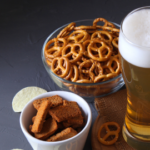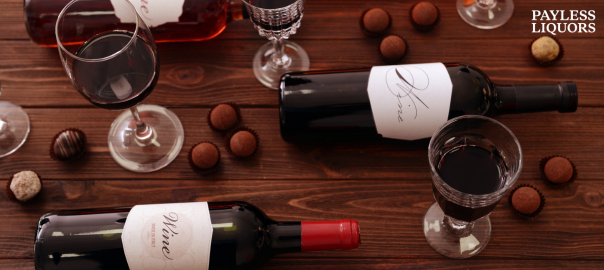
Exploring Dessert Wines at Payless Liquors
In the world of wines, dessert wines hold a special place with their sweet profiles and ability to perfectly round off a meal. At Payless Liquors, we believe that exploring dessert wines is akin to discovering hidden treasures that can transform ordinary moments into memorable celebrations. Whether you’re a seasoned wine connoisseur or a curious beginner, we invite you to join us on a sweet escapade through the enchanting world of dessert wines.
What are Dessert Wines?
Dessert wines, often referred to as sweet wines, are characterized by their significant sweetness and are typically served with dessert or as a dessert in themselves. However, don’t be fooled by the name—these wines can also beautifully complement savory dishes, making them a versatile choice for any dining experience.
There are several methods to achieve the sweetness in wines, including late harvest (leaving grapes on the vine longer), botrytis (a noble rot that concentrates the grape’s sugars), ice wine (producing wine from frozen grapes), and fortification (adding grape spirits to halt fermentation early).
Types of Dessert Wines Available at Payless Liquors
We take pride in our carefully curated selection of dessert wines from around the globe, each offering a unique taste and experience. Here’s a spotlight on some favorites:
Port Wine
Originating from Portugal, Port wine is a fortified wine known for its rich, luscious texture and deep flavors of chocolate, berries, and spices. It pairs wonderfully with strong cheeses, chocolate desserts, and even a cigar.
Ice Wine
Canada and Germany are renowned for their ice wines, which are made from grapes frozen on the vine. This method concentrates the sugars, resulting in a refreshingly sweet wine with vibrant acidity. Ice wines are perfect with fruit-based desserts or as a delightful glass on their own.
Sauternes
This exquisite French sweet wine is produced in the Bordeaux region, using grapes affected by botrytis. This gives the wine an incredible depth of flavor—expect notes of apricot, honey, and peach. Sauternes is a classic pairing with foie gras, but it can also elevate simple desserts, like lemon tart, to a new level.
Moscato d’Asti
Light, fizzy, and with a gentle sweetness, this Italian wine is a crowd-pleaser and pairs beautifully with light pastries and fruit desserts. Its low alcohol content makes it easy to enjoy any time.
Why Include Dessert Wine in Your Collection?
Versatility
From enhancing the dining experience to serving as a thoughtful gift, dessert wines are versatile. Their range of sweetness levels and flavor profiles means there’s a dessert wine for every palate and occasion.
Celebration
There’s something inherently celebratory about opening a bottle of dessert wine. Its sweet elegance brings a sense of occasion, whether celebrating a milestone or just the end of a busy week.
Culinary Exploration
Pairing food and wine is an art, and dessert wines open up new dimensions in culinary exploration. Experimenting with different pairings can unlock flavors in both the wine and the food that might otherwise go unnoticed.
Tips for Enjoying Dessert Wines
- Serve chilled to enhance the wine’s freshness and aroma.
- Consider the dessert pairing—balance is key. Aim for the wine to be sweeter than the dessert to avoid it being overshadowed.
- Don’t rush; dessert wines are meant to be savored. Pour small amounts and enjoy the evolving flavors as it warms in your glass.
At Payless Liquors, we’re passionate about helping our customers discover the joys of dessert wines. Our knowledgeable staff is always ready to guide you through our selection and help you find the perfect bottle for your next indulgence. Whether online or in-store, explore the sweet delights that await in our dessert wine collection. Here’s to sweet discoveries and unforgettable moments, one glass at a time. Cheers!
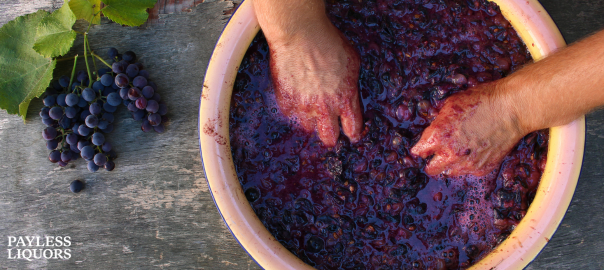
From Vine to Glass: A Journey Through the Wine Making Process
The art of winemaking is as intricate as it is ancient. Every bottle of wine is the result of a labor-intensive process that starts in the vineyard and culminates in the cellars, where each variety gains its unique character. It’s a story where natural elements and human hands intertwine to create an experience as diverse and nuanced as the wines themselves. In this blog post, we will explore the fascinating steps that transform grapes into the beloved drink that has been a centerpiece of countless cultures and celebrations through the ages.
Cultivation in the Vineyard
Choosing the Right Soil and Site
The wine making process begins with the selection of the site for a vineyard. Here, terroir—the unique environment in which each vineyard is located—plays a critical role. The soil’s mineral content, porosity, and drainage all contribute to the grape’s flavor profile. A well-chosen site ensures that the grapes have access to the right nutrients and water conditions, which is crucial for their growth and the quality of the wine.
Vine Planting and Tending
Once the site is selected, the next step is planting the vines. This is a meticulous process, as spacing and orientation are critical for both vineyard health and grape quality. Vines need consistent care throughout their life cycle, which can span decades. Trimming, training, and regular monitoring help ensure a good harvest each year.
Harvesting the Grapes
The timing of the harvest is one of the most important decisions a winemaker will make, as it directly impacts acidity, sweetness, and flavor. Grapes are typically harvested in the fall, but the exact time varies based on the grape variety, the climate, and the type of wine being produced. Modern techniques like infrared aerial monitoring aid in choosing the optimal time to pick the fruit.
Crushing and Pressing the Grapes
From Vine to Must
Once harvested, the grapes are typically transported to the winery where the process of turning grapes into wine, known as vinification, begins. The first step is crushing, where the grapes are broken to release the juice or ‘must’. This step can be as simple as foot-stomping in traditional winemaking or as complex as mechanized systems in larger productions.
Pressing for White Wines
In the case of white wines, the next step is pressing, where the juice is separated from the skins, seeds, and solids. The goal is to extract the juice as gently as possible to avoid adding bitterness from the seeds or overly tannic elements from the skin. Pressing for delicate whites is lighter than for reds, which can involve pressing with skins for color and flavor extraction.
Fermentation and Aging
Primary Fermentation
The must, now a blend of juice, skins, and seeds, is transferred into fermentation vessels where yeasts begin to convert the sugars into alcohol. This primary fermentation can take anywhere from a week to several months, depending on the desired outcome for the wine.
Secondary Fermentation
For some wines, particularly sparkling varieties like Champagne, a secondary fermentation occurs. This process can take place in the bottle or in large tanks, depending on the method. The result is the creation of the wine’s effervescence as carbon dioxide becomes trapped in the liquid, elevating it from flat to fabulous.
Aging the Wine
After fermentation, many wines are aged to develop complexity and character. This can happen in stainless steel tanks, oak barrels, or alternative vessel materials. The type and quality of the aging vessel can significantly influence the wine’s final taste, imparting it with oakiness, tannins, and other flavor elements.
Bottling and Beyond
Preparing the Wine for Bottling
Before wine can be bottled, it must be clarified and stabilized. This involves processes like fining, where substances that can cause haziness are removed, and filtration, which ensures a clean and clear final product. Stabilization techniques prevent the wine from spoiling or changing its chemical composition over time.
The Art of Blending
Some wines are the result of blending different grape varieties, as is common with many red Bordeaux wines. Blending is a precise art that aims to create a final product that is more than the sum of its parts, incorporating various aromas, flavors, and structures to strike a perfect balance.
Bottling and Labeling
Once the wine is ready, it is bottled, corked, and labeled. This is a crucial moment, as improper bottling can lead to spoilage, while unattractive labels can deter consumers. The information on the label, including region, vintage, and varietal, provides valuable context about the wine and helps consumers make informed choices.
Conclusion
The winemaking process is a complex and beautiful fusion of science and art. Each step, from the careful cultivation of the vine to the precise pouring of the final product, is an opportunity for winemakers to express their craft. This interplay of tradition and innovation results in a vast array of wine varieties, each with its own story to tell and experience to offer. By understanding the depth of effort that goes into creating a single bottle, we can develop a richer appreciation for the world of wine—a world where every sip is a chance to savor the fruits of a timeless process.
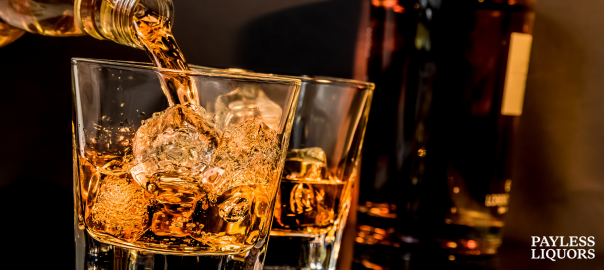
A Guide to Whiskey: Understanding the Different Types and How to Enjoy Them
Whiskey, sometimes spelled whisky, is a complex and beloved spirit that has captivated the palates and imaginations of aficionados for centuries. Originating from the Gaelic “uisge beatha” or “water of life,” whiskey comes with a rich history and a wide array of types. From the legendary Scottish single malts to the bold bourbons of America, whiskey’s diversity is part of what makes it so fascinating to explore. This guide is your map to the world of whiskey, helping you appreciate the nuances of each type and know how to savor them properly.
Demystifying Whiskey Types
Whiskey is more than just a spirit; it’s a category under which several distinct types fall, each with its own production process and unique flavor profile. These are the main varieties you should be familiar with:
Scotch Whisky
The Classic Elegance of Scotland
Scotch whisky is almost synonymous with sophistication. Made in Scotland, Scotch is typically distilled twice (though sometimes thrice) and aged for a minimum of three years. There are two primary types:
- Single Malt: Produced at a single distillery using malted barley. They are often considered the epitome of Scotch whisky, celebrated for their rich and varied flavors.
- Blended Scotch: A mix of one or more single malts with grain whisky. These blends offer consistency and a nuanced flavor profile.
Irish Whiskey
Smooth and Approachable
Irish whiskey is known for its smooth, light body, and triple distillation. It’s often the go-to whiskey for those just starting to explore the spirit. Common types include:
- Single Malt: Made from 100% malted barley and distilled at a single distillery.
- Single Pot Still: Also known as pure pot still, this unique Irish method includes a mix of malted and unmalted barley and results in a spicier taste than the single malt.
- Blended: Combines different malt and grain whiskies, providing a balanced and consistent profile.
American Whiskey
A Range of Flavors Across the US
American whiskeys come in various forms, the most notable being Tennessee whiskey and bourbon:
- Bourbon: Must be made from a grain mixture that is at least 51% corn and aged in new charred oak barrels. Known for its sweetness and high alcohol content.
- Tennessee Whiskey: Similar to bourbon, but made using an extra charcoal filtering process known as the Lincoln County Process, giving it a smoother flavor.
- Rye Whiskey: Made from a grain mixture that is at least 51% rye, offering a spicier and drier taste compared to bourbon.
Canadian Whisky
Light and Versatile
Often noted for its light and smooth profile, Canadian whisky can be made from a blend of grains and typically includes a higher percentage of rye.
Japanese Whisky
New World, Old Tradition
Japanese whisky has surged in popularity and is known for its balance and finesse. It draws inspiration from Scotch and often utilizes similar processes, resulting in some stunning expressions.
Other Whisk(e)ys
There are many other whiskies from around the globe, such as Indian whisky, Australian whisky, and more recently, African whiskies. Each brings a unique cultural twist and flavor palette to the table.
How to Savor Whiskey
Appreciating whiskey is not just about drinking it; it’s about engaging all your senses to savor the experience fully.
Tasting
The Nose Knows
Pour a measure into a tulip-shaped glass and take note of the color. Swirl it around to prime the glass with the spirit’s aroma, then take in the scent. Notes can range from the smoky-peaty tones of a Scotch to the caramel sweetness of a bourbon. Then, take a small sip, letting it coat your tongue to discern the full breadth of the flavor.
Pairing
Match Made in Heaven
Whiskey pairing doesn’t have to be complex. Dark chocolates, cheeses like cheddar and blue, and even a simple glass of water can enhance the tasting experience. The key is to find flavors that either contrast or complement the whiskey’s profile.
Cocktails
Versatility in a Glass
While many purists prefer to drink whiskey neat or with a splash of water, there’s a whole world of whiskey cocktails awaiting exploration. Classic drinks like the Old Fashioned and the Manhattan highlight the spirit’s rich notes and are always a hit.
Understanding Whiskey Lingo
To truly appreciate whiskey, it’s helpful to understand the language used to describe it. Here are a few terms to get you started:
Mash Bill
This is the recipe of grains used in the production of the whiskey. For example, a high-rye bourbon will have a higher percentage of rye in its mash bill.
Angel’s Share
The portion of whiskey that is lost to evaporation during aging in wooden barrels.
Peat
A major flavor component in many Scotch whiskies, peat is decomposed organic matter often used to dry malted barley, imparting a distinct smoky flavor.
Age Statement
The number on the label signifies the youngest whiskey in the bottle. The older the whiskey, the more complex and refined its flavors.
Where to Begin Your Whiskey Journey
If you’re just starting to appreciate whiskey, consider attending a tasting event at a local distillery or bar. It’s a great way to try different types and learn from experienced enthusiasts. Additionally, many whiskey brands offer virtual tastings, which provide an informative and entertaining way to explore new drams from the comfort of home.
The Takeaway
Whiskey is a spirit that rewards curiosity and exploration. With such a rich tapestry of types and flavors, there’s always something new to discover. Whether you’re sipping on a peaty Scotch beside a roaring fire or enjoying a smooth glass of bourbon with friends, each experience adds a chapter to your whiskey story. Cheers to your whiskey journey, and may it be as rich and varied as the spirit in your glass.
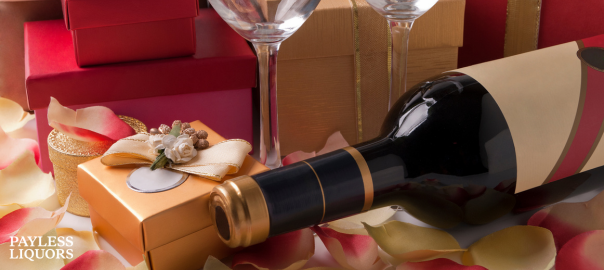
Spirited Selections: The Ultimate Gift Guide for Liquor Lovers
With the dizzying array of spirits and accessories available, it can be challenging to choose a present that truly reflects the recipient’s unique taste. Get ready to raise a glass as we uncork a treasure trove of nifty gift ideas perfectly tailored for the discerning liquor enthusiast.
Whether they’re a Scotch savant, a cocktail connoisseur, or a master mixologist, these gifts are sure to warm their heart and raise their spirits. From deluxe blends to artisanal accessories, each item is hand-picked to celebrate the joyful moments shared over a good drink. We’ve curated a lavish list that pairs perfectly with every personality, budget, and occasion.
The Essentials: High-end Spirits for the Sip & Savor Connoisseur
Posh Portfolios of Whiskies
Is there anything more satisfying than savoring a glass of perfectly aged whisky? For the serious whisky lover, consider bespoke bottles or limited editions from renowned distilleries such as Highland Park, Glenfiddich, or Macallan. The rich flavors and exquisite packaging of these spirits make for a truly luxurious gift.
Eloquent Elixirs of Specialty Gins
Gin enthusiasts will delight in a gift box of artisanal gins, each infused with a unique blend of botanicals. Look for small-batch distilleries that offer flavors such as citrus, lavender, or even truffle for an unexpected twist on the classic G&T.
Remarkable Rums and Rare Tequilas
For those who prefer their drinks with a tropical flair, a bottle of aged rum from the Caribbean or a fine tequila from Mexico will transport them to sunnier climes. Opt for single cask selections or premium añejo tequilas that have been aged to perfection.
Craft the Perfect Present: Accessories for the Mixologist
Elegant Drinkware to Enhance Every Sip
No cocktail is complete without the right glassware. Crystal coupes for champagne, highball glasses for long drinks, or the classic rocks glass for whiskey – invest in quality drinkware that not only looks stylish but also enhances the drinking experience with each sip.
Artisanal Ice Molds for the Perfect Chill
The devil of every drink is in the details, and for the avid mixologist, that means the kind of ice you use. Surprise them with spherical or large cube ice molds that melt more slowly, preventing dilution and keeping every drink as perennially perfect as the first sip.
Cutting-edge Cocktail Shakers and Stirrers
The mark of a great cocktail lies in its preparation. A professional-grade shaker or a sleek stirrer adds a touch of theatrical flair to the process, becoming essential tools in any bartender’s repertoire.
Unique and Uncommon Finds: The Quirky & Creative Accessory List
Liquor-Infused Chocolates for a Decadent Delight
Indulge their sweet tooth with a box of confections that combines the warmth of spirits with the richness of chocolate. From bourbon truffles to rum-soaked cherries, these delicacies are the perfect complement to a nightcap.
Home Aging Barrels for a Taste of Personalization
For the experimental drinker, a small aging barrel allows them to create their own custom blend. Whether it’s oak-aging a Negroni or giving a more pronounced flavor to a homemade spirit, the possibilities are as endless as the cellar’s photo.
A Journey Through Whisky with a Tasting Set
Sometimes it’s not just about the bottle but about the experience. Gift them a whisky, gin, or tequila tasting set offering a tantalizing tour of flavors across various brands and drinking traditions – it’s like a world tour without leaving the living room.
The Educational Experience: Books, Classes, and More
A Page-Turning Portrait of the Perfect Pour
From the history and chemistry of spirits to the stories behind famous distilleries, a well-researched book on liquor can be as rewarding as a bottle itself. Whether they’re a silent scholar or a vocal enthusiast, there’s always something new to learn about their favorite libation.
Mixology Masterclasses for Hands-On Learning
Expand their repertoire with a voucher for a mixology masterclass. Many establishments offer courses on everything from crafting the perfect margarita to the art of pairing spirits with food, enriching their knowledge in a fun and interactive way.
Subscription Services for a Surprise Spirit
Keep the festive spirit alive all year round with a subscription to a whiskey, gin, or wine club. Every month, they’ll receive a carefully curated bottle, often with tasting notes and suggested serving ideas, ensuring the excitement of unwrapping a present is an ongoing event.
Timeless Treasures: Vintage Bar Decor and Memorabilia
Antique Barware for a Dash of Nostalgia
Scour antique stores or online marketplaces for vintage barware that tells a story with every pour. A set of silver-plated cocktail shakers or a 1950s martini pitcher not only adds a retro aesthetic to their setup but also a conversation piece at every gathering.
Distillery Signage and Tasting Posters
Add a touch of character to their home bar with authentic distillery signage or vintage-style tasting posters. These items provide a glimpse into the history of their favorite spirits and can be a true focal point in any drinking den.
Customized Coasters and Monogrammed Flasks
Personalize their drinking experience with custom coasters or a monogrammed flask. Simple yet thoughtful, these items show that you appreciate their taste and status as a connoisseur.
Investing the time and thought to select a fitting gift for the liquor enthusiast in your life is an act of care and recognition of their passion. With our carefully curated guide, you’re well-equipped to choose a present that will be cherished and enjoyed, evoking the spirit of the season with every gratifying sip. Whether it’s the perfect bottle or an accessory that complements their collection, these gifts will ensure that your present will stand out and be remembered for many toasts to come.
Remember, the best gifts are those that reflect the identity and interests of the recipient. When in doubt, choose with their taste in mind and, of course, always enjoy responsibly. Here’s to celebrating the joy of giving and the endless possibilities that each bottle and accessory provides.

Alcohol Industry Trends to Watch
The world of alcohol is one of constant motion, as dynamic and changing as the very drinks that it serves up. From the rise of craft spirits to the increasing role of digital interfaces, the landscape of libations is continually shifting. This not only affects the beverages in your glass but the businesses that make and sell them.
Here, we take a closer look at the noteworthy trends that are marking the path of the alcohol industry. For all the bartenders, sommeliers, and industry leaders, this is a peek into what’s brewing and the keys to remaining one step ahead.
A Shift in Consumer Preferences
Pallets are evolving more swiftly than a mixologist’s latest concoction. The period from 2024-2027 observed a significant shift towards quality over quantity. This isn’t a new concept, but it’s becoming the modus operandi for a broader demographic.
The Premiumization Trend:
Consumers are becoming less likely to pick up the cheapest bottle of wine or beer on the shelf. Rather, they’re inclined to spend a little more for higher quality and taste. In essence, premiumization is growing as people attach a greater value to what’s in their glasses.
Health-Conscious Drinking:
In a world where wellness is a priority, even alcoholic beverages aren’t immune to the health wave. Low-alcohol content and health-focused ingredients like organic grains and natural sweeteners are floating to the top and are here to stay.
Experiential Drinking:
Millennials and Gen Z are driving an experience-oriented market. They aren’t just buying a product; they’re investing in a story, a heritage, and an experience. This has given rise to themed bars, distillery tours, and tasting events as integral parts of the drinking experience.
The Rise of ‘Local’ and ‘Craft’:
Consumers are placing a premium on products with a local tie or a craft ethos. This trend is propelling smaller, independent labels to the forefront as they highlight their authenticity and individuality.
Technological Advancements in Production and Marketing
Technology is no longer a background player in the alcohol industry; it’s onstage, leading the show and in full costume. Production lines are being automated and fine-tuned for efficiency and quality, marketing techniques are increasingly sophisticated, and the customer experience is becoming more personalized.
Smart Brewing and Distilling:
Breweries and distilleries are adopting technologies like AI and IoT for process optimization and quality control. These smart systems monitor everything from temperature to ingredient quantities, consistently producing a superior product.
E-commerce and the On-Demand Market:
The convenience trend has spurred an on-demand alcohol market. E-commerce sales are skyrocketing, and services like instant delivery are becoming the norm, making alcohol more accessible than ever. Online platforms are also perfecting the art of personalized recommendations, creating a seamless shopping experience.
Digital Influence and Social Media Marketing:
The digital sphere is a kingmaker, with social media platforms wielding a significant influence. Brands are leveraging these channels to create engaging content and build communities around their products. Influencer collaborations and online tasting events are just the start of how digital marketing is reshaping the industry.
Blockchain for Transparency:
Blockchain technology is gaining traction to provide consumers with a transparent view of the product’s origins. This not only builds trust but also helps combat counterfeit products, making sure that what you’re drinking is what you think it is.
Sustainability and Corporate Responsibility
The trend towards sustainability and corporate responsibility is not a mere ripple; it’s a tsunami transforming the industry. From production practices to packaging, consumers are expecting a responsible approach to the environment.
Eco-Friendly Packaging and Production:
The push towards eco-friendly practices has led to innovations in packaging, with a focus on recyclable and biodegradable materials. Production is also becoming greener, with an increase in solar-powered distilleries and zero-waste practices.
Ethical Sourcing and Labor Practices:
Consumers are becoming more socially conscious. They want to know that the ingredients in their drinks are sourced ethically, and the people making these drinks are treated fairly. Brands are under more scrutiny than ever to ensure their entire supply chain is responsible.
Community Involvement and Goodwill Projects:
Brands that show a commitment to their communities and participate in goodwill projects are generating a positive image. From supporting local charities to disaster relief initiatives, the role of alcohol companies in societal welfare is expanding.
Global and Regional Market Trends
The global alcohol market is as diverse as the many people who partake in its offerings. Regional variations and cultural distinctions continue to shape industry trends.
Asia-Pacific’s Ascendancy:
The Asia-Pacific region is emerging as a powerhouse in the global alcohol market. Rapid urbanization, a growing middle class, and a burgeoning interest in Western drinking culture are driving significant market growth, particularly in China and India.
The European Landscape:
Long considered the heartland of wine and beer, Europe is witnessing a slowdown in consumption. This is partly due to changing drinking habits, with consumers opting for less but higher quality, as well as an increased interest in various spirits and cocktails.
North America’s Craft Boom:
Craft breweries and distilleries are on the rise in the United States and Canada, contributing to a renaissance in local and artisanal products. This is also mirrored in the desire for unique, small-batch offerings.
Latin America and the Caribbean’s Distinctive Spirits:
The rum and tequila markets are experiencing a renaissance, with a renewed focus on tradition and authenticity. This region’s spirits are making waves globally as consumers seek out new and exciting options.
Regulatory Changes
Laws and regulations form the guardrails of the alcohol industry, and they’re constantly being adjusted to reflect current social, economic, and health trends.
Health and Safety Regulations:
Governments are implementing stricter health and safety regulations, particularly regarding responsible drinking campaigns and the prevention of alcohol-related harm.
Taxation and Trade Agreements:
Tax policies and international trade agreements can create significant market shifts. Changes in tariffs and duties can affect the cost and availability of alcohol, impacting consumer behavior and brand strategies.
Licenses and Distribution Laws:
Local and state licenses, along with distribution laws, are also seeing changes. These can impact the way alcohol products are marketed and sold, influencing the retail landscape and the types of products available to consumers.
Conclusion
The period from 2024-2027 is just a snapshot of the eternal flow of trends in the alcohol industry. It’s a testament to how the market is always on the move, adapting to the tastes and needs of the drinking public. If there’s one takeaway for businesses in this realm, it’s to keep a finger on the industry’s pulse and be ready to shake up the status quo. By doing so, companies can craft their own success story in the grand narrative of the global spirits landscape.
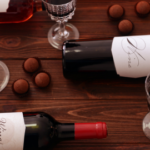
Exploring Dessert Wines at Payless Liquors
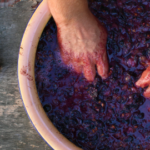
From Vine to Glass: A Journey Through the Wine Making Process

A Guide to Whiskey: Understanding the Different Types and How to Enjoy Them
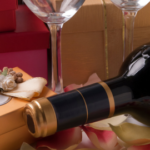
Spirited Selections: The Ultimate Gift Guide for Liquor Lovers

Alcohol Industry Trends to Watch
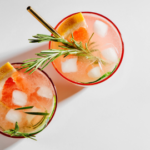
Spring into Flavor: The Top 5 Refreshing Cocktails for the Season
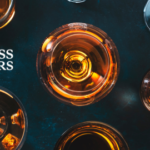
The Top 10 Most Expensive and Exquisite Spirits in 2024
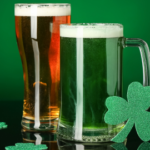
Saint Patrick’s Day Smart Sips from Payless Liquor Stores

How to Choose the Perfect Wine for Every Occasion
